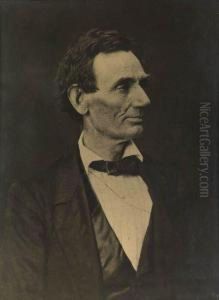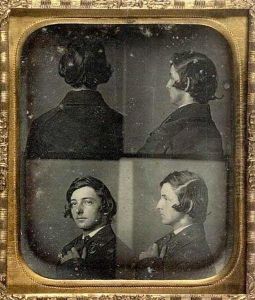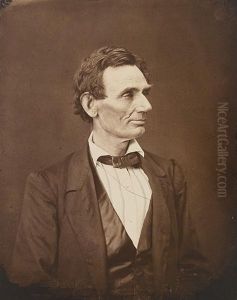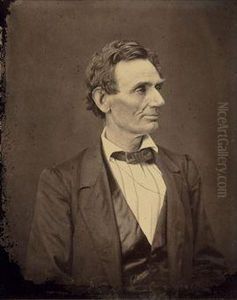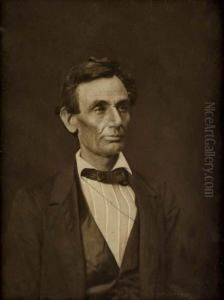Alexander Hesler Paintings
Alexander Hesler was an American photographer born in Canada, whose work is notable for its historical significance during the mid-19th century. His full name was George Ayres Hesler, but he was commonly known as Alexander Hesler. Born in Montreal on July 12, 1823, Hesler moved to the United States in his early years, eventually making his mark in the realm of photography.
Hesler’s career spanned a period when photography was rapidly evolving, and he became known for his portraits, landscapes, and especially for his daguerreotypes, a popular photographic process of that era. He established his first photography studio in Chicago in 1852, where he became a prominent figure in the burgeoning art of photography. His studio attracted a diverse clientele, ranging from politicians and businessmen to everyday citizens.
One of Hesler's most historically significant contributions was his portrait of Abraham Lincoln, taken in 1860, which is considered one of the best of the pre-presidential Lincoln images. This photograph was widely reproduced and became one of the key images that shaped Lincoln’s public image. Besides this iconic work, Hesler also photographed other notable figures of his time, including Stephen A. Douglas, Ulysses S. Grant, and Native American chief Black Hawk.
Throughout his career, Hesler was an innovator, adopting new techniques and processes as the field of photography developed. He was known for his dedication to quality and his ability to capture the character and essence of his subjects. Despite the challenges of the photography business, including the Great Chicago Fire of 1871, which destroyed his studio and many of his negatives, Hesler continued to work and rebuild his practice.
Alexander Hesler died on July 5, 1895, in Evanston, Illinois. Although not as widely recognized today as some of his contemporaries, his work remains an important part of the history of American photography, providing a window into the people and places of his time. His portraits, in particular, have left a lasting legacy, preserving the likenesses of key historical figures for posterity.
